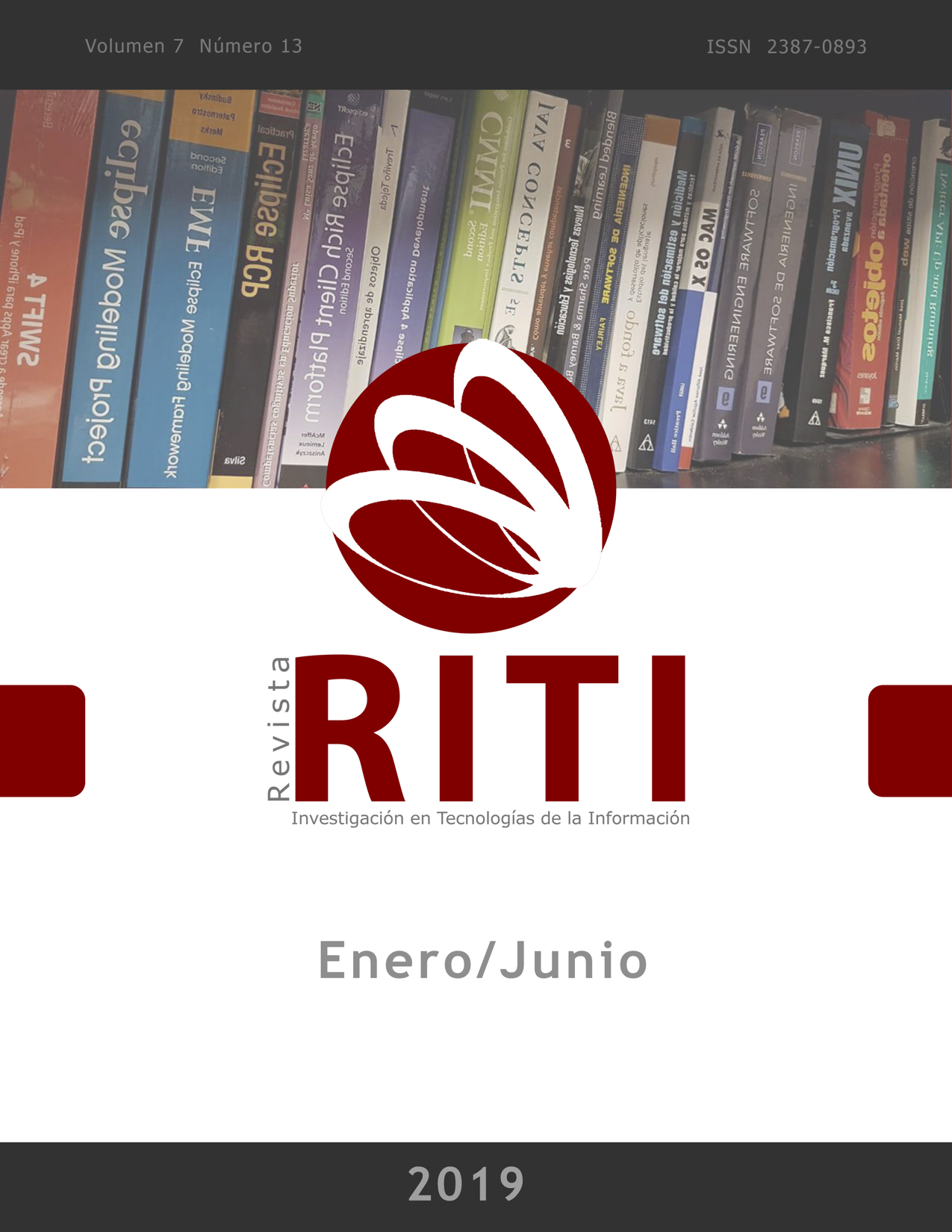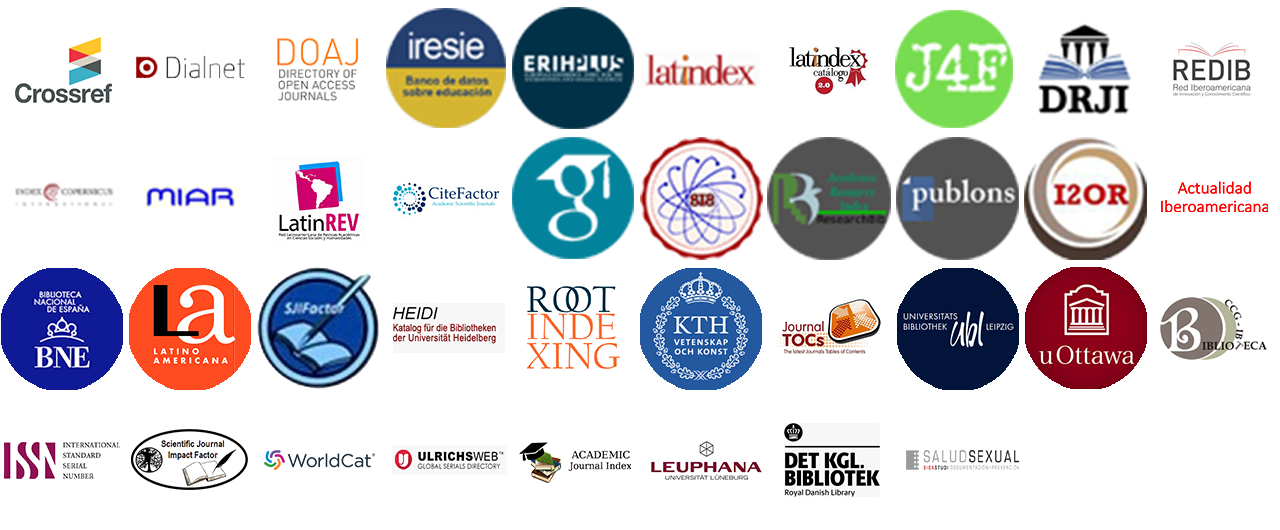USE OF TECHNOLOGY IN UNIVERSITY MATHEMATICS LEARNING
Keywords:
Information Technology, E-learning, Mathematics, Higher EducationAbstract
The learning of mathematics in a faculty of computer science has certain distinctive features, mainly due to the fact that most students consider in their future career, mathematics has little importance and are often not ready for serious study of the mathematical disciplines. The objective of this current work was to know the new educational technologies and determine if these help the learning process in mathematics of students in third year of computer science; it has been hypothesized that the use of new educational technologies significantly improves the learning of mathematics in third-year computer students. Through a study with a quantitative approach of descriptive method and through a survey of 20 questions applied to 100 third-grade students of a Mexican university, results were obtained that indicate that the majority of students consider it beneficial for them to implement the ICT in the learning of mathematics and are in favor of its use by the teacher during the teaching process. It is also noteworthy that most of the students took a neutral position before the perception of a negative effect of the technologies in their learning.
References
Galán García, J. L., González Marí, J. L., Padilla Domínguez, Y., Rodríguez Cielos, P. (2006). Uso de las Tecnologías de la Información y la Comunicación en Educación Matemática. Una experiencia en las titulaciones de ingeniería de la Universidad de Málaga. Education in the Knowledge Society (EKS), 7 (1), 1-11. Recuperado de: http://revistas.usal.es/index.php/eks/article/view/19138
Camacho, M., Depool, R. (2002). Students' attitudes towards Mathematics and computers when using DERIVE in the learning of calculus concepts. International Journal of Computer Algebra in Mathematics Education, 9 (4), 259-283.
Drijvers P. (2015). Digital Technology in Mathematics Education: Why It Works (Or Doesn’t). In: Cho S. (eds), Selected Regular Lectures from the 12th International Congress on Mathematical Education. doi: https://doi.org/10.1007/978-3-319-17187-6_8
Bell, D. (2016). The reality of STEM education, design and technology teachers’ perceptions: a phenomeno graphic study. International Journal of Technology and Design Education, 26 (1), 61-79. doi: https://doi.org/10.1007/s10798-015-9300-9
Zaldívar-Colado, A., Nava-Pérez, L., Alvarado-Vázquez, R. I. (2018). Redes sociales en la enseñanza y aprendizaje de universitarios mexicanos. En Alvarado-Vázquez, R. I., Zaldívar-Colado, A. y Nava-Pérez, L. (coords), La enseñanza con el apoyo de las nuevas tecnologías en el aula universitaria (pp. 23-49). México: Universidad Autónoma de Sinaloa/Universidad del Pacífico Norte.
Zaldívar, A., Tripp, C., Aguilar, J. A., Tovar, J. E., Anguiano, C. E. (2015). Using Mobile Technologies to Support Learning in Computer Science Students. IEEE Latin America Transactions, 13 (1), 377-382. doi: https://doi.org/10.1109/TLA.2015.7040672
Ayil Carrillo, J. S. (2018). Entorno virtual de aprendizaje: una herramienta de apoyo para la enseñanza de las matemáticas. Revista de Investigación en Tecnologías de la Información (RITI), 6 (11), 34-39. Recuperado de:
http://www.riti.es/ojs2018/inicio/index.php/riti/article/view/84/75
Colmenares Guillén, L. E., Carrillo Ruiz, M., Jiménez González, F. Hernández Ameca, J. L. (2017). Problemas generados por el uso de la tecnología en los universitarios. Revista de Investigación en Tecnologías de la Información (RITI), 5 (10), 13-19. Recuperado de:
http://www.riti.es/ojs2018/inicio/index.php/riti/article/view/6/42
Quiroga-Pérez, N. (2018). Uso de las tics en el área de matemáticas de la carrera ingeniería de sistemas de la universidad privada Nur de Santa Cruz de la Sierra, Bolivia. Fides Et Ratio, 15 (15), 131-150. Recuperado de: http://www.scielo.org.bo/scielo.php?script=sci_arttext&pid=S2071-081X2018000100009&lng=es&tlng=es
Moyano, V., Paniagua, S. (2016). Escenarios de futuro para los digital learners. Tendencias sobre la experiencia digital de los usuarios de la red y su impacto en la educación superior en línea. Barcelona: eLearn Center - Oberta Publishing (UOC), Fundación Creafutur. Recuperado de:
http://openaccess.uoc.edu/webapps/o2/bitstream/10609/48721/6/Creafutur%20-%20UOC%20-%20FS4DL.pdf
Olivier Rodríguez, O. Z, Díaz López, J. R., Alonso Betancourt, L. A. (2016). Modelo didáctico de la dinámica del proceso de enseñanza – aprendizaje de la matemática con el uso de las tic. Didasc@lia: Didáctica y Educación, 3, 23-34. Recuperado de: https://dialnet.unirioja.es/servlet/articulo?codigo=6645302
Molina Mora, J. (2016). Experiencia de la integración de las TICs para la enseñanza y aprendizaje del Cálculo II. Revista Iberoamericana De Tecnología En Educación Y Educación En Tecnología, (18), 85-100. Recuperado de: http://teyet-revista.info.unlp.edu.ar/TEyET/article/view/376
Moreno Jimenez, S. J., García Mora, J. J. (2016). Las TIC y el Aprendizaje Híbrido en Cálculo Diferencial. Instituto Tecnológico Metropolitano. Recuperado de: https://www.researchgate.net/publication/328517402_Las_TIC_y_el_Aprendizaje_Hibrido_en_Calculo_Diferencial
Durán, E.B., Álvarez, M., Unzaga, S., Salazar, N., Fernández, B., González, G., Figueroa, S.G. y Cordero, R.D. (2016). Diseño y desarrollo de aplicaciones de aprendizaje ubicuo. Universidad Nacional de Santiago del Estero. Recuperado de: http://sedici.unlp.edu.ar/handle/10915/53367
Bustos, M. A., Perez N. B. (2016). Innovación en la educación superior: aplicación móvil para universidades. XI Congreso de Educación en Tecnología y Tecnología en Educación, Buenos Aires, Argentina. Recuperado de: http://sedici.unlp.edu.ar/handle/10915/54660
Published
How to Cite
Issue
Section
License
Copyright (c) 2019 Revista de Investigación en Tecnologías de la Información

This work is licensed under a Creative Commons Attribution-NonCommercial-NoDerivatives 4.0 International License.
Esta revista proporciona un acceso abierto a su contenido, basado en el principio de que ofrecer al público un acceso libre a las investigaciones ayuda a un mayor intercambio global del conocimiento.
El texto publicado en la Revista de Investigación en Tecnologías de la Información (RITI) se distribuye bajo la licencia Creative Commons (CC BY-NC
 ), que permite a terceros utilizar lo publicado citando a los autores del trabajo y a RITI, pero sin hacer uso del material con propósitos comerciales.
), que permite a terceros utilizar lo publicado citando a los autores del trabajo y a RITI, pero sin hacer uso del material con propósitos comerciales.



